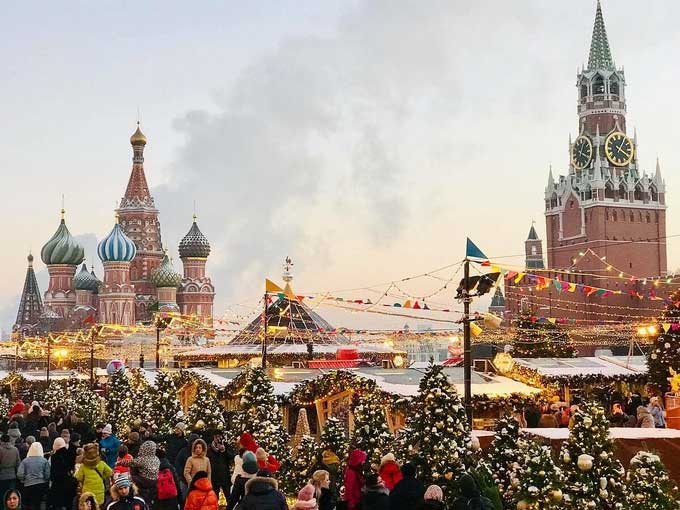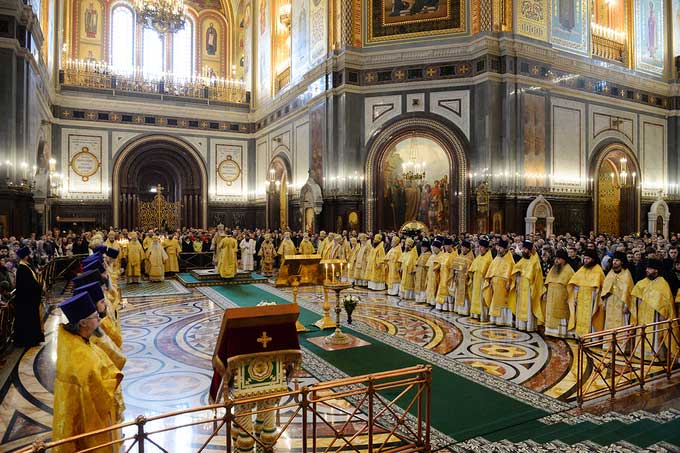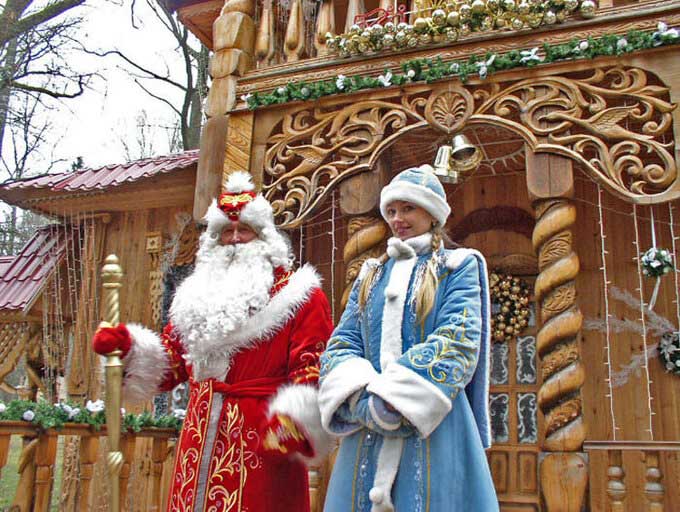Christmas, the holiday celebrating the birth of Jesus Christ, is typically observed on December 24 and 25 in Christian countries. This event is familiar to most of us, but in addition to the Christmas celebration in December, there is another Christmas celebrated in January in Russia and some Eastern Orthodox countries.
The Christmas on January 7 is also known as Old Christmas Day.
Instead of celebrating Christmas on the night of December 24 and all day December 25 like many other countries, the people of the land of the White Sea choose January 7.
Orthodox Christians in Russia celebrate Christmas alongside millions of believers worldwide on January 7 each year. Initially, both Orthodox and Catholic Christians celebrated Christmas on the same day. In 1582, Pope Gregory XIII announced a new type of calendar – the Gregorian calendar in Europe. Immediately, most Catholic countries in Europe adopted the new calendar, and that year, October 5 became October 15. In Germany, the new calendar was adopted in the early 18th century. The United States and England used the old Julian calendar until 1752.

Christmas market at Red Square, Moscow. (Photo: Văn Thiên Hào).
In Russia, the Gregorian calendar was only adopted in 1918 by decree of the Soviet Government, changing January 31 of that year to February 14. However, the Russian Church did not accept these changes and continued to celebrate Christmas on December 25 according to the Julian calendar, which corresponds to January 7 of the following year in the Gregorian calendar. Currently, there is a 13-day difference between the two calendars. Besides Russia, many Orthodox churches also celebrate Christmas in January: Ukraine, Kyrgyzstan, Kazakhstan, Moldova, Belarus, Armenia, Montenegro, North Macedonia, Poland, Israel, Serbia, Georgia, Ethiopia, Egypt… This is why Easter, Christmas, and some other religious holidays arrive in Russia two weeks later.
Christmas is one of the most important holidays for Orthodox Christians, marking the end of Lent. About 2.3 million Russian Orthodox Christians flock to churches, participate in festive processions, and rituals on Christmas Eve, singing carols… This solemn event is celebrated in thousands of cities and towns across the Russian Federation.

Atmosphere in an Orthodox Christian church on Christmas Eve in Russia. (Photo: Caspian News)
Christmas is seen as an expression of power and sanctity, helping to strengthen the bonds among people. This traditional festival begins on Christmas Eve, known as Sochyelnik. Christians in Russia, comprising about 75% of the population, gather to pray and hold a large, warm feast with family. Traditional dishes on the festive table include pickled cucumbers, salted mushrooms, sauerkraut, stewed apples, meat-filled pastries, mushrooms, fish, and vegetables… They also have the tradition of giving gifts to each other, decorating their homes with angel figures, stars, and nativity scenes. Some Russians do not fast or attend church but still celebrate Christmas, as they view it as a holiday of love, acceptance, and tolerance.
A common tradition among Russians during this time is fortune-telling. This practice is performed by young, unmarried women who gather at a house or Banya – a Russian bathhouse. They wear nightgowns and let their hair down. Older women perform a ritual to bring prosperity to the family. Men and married women are not allowed to participate. This is merely a recreational tradition for the people.

Ded Moroz (in red) and Snegurochka, the Russian version of Santa Claus and his snow princess assistant. (Photo: Travel Triangle).
The Christmas celebrations in Russia differ in some aspects from those in the West: there is no custom of exchanging gifts during Christmas, no Santa Claus, and the Christmas tree is not decorated in a particular way.
The land of the White Sea has its own version of Santa Claus, distinct from the jolly gentleman with a round belly dressed in red who appears in Hollywood films and Christmas cards in America. Santa Claus in Russia is called Ded Moroz, typically wearing a red, blue, or gold fur coat, traditional Russian boots, and riding a troika instead of reindeer. His assistant is his granddaughter Snegurochka – the rosy-cheeked snow princess with blonde hair and a bright smile. Instead of Christmas Eve, Ded Moroz usually gives gifts to children on New Year’s Eve.
Not the North Pole, the place where Russian children can meet Ded Moroz is a mansion in the town of Veliky Ustyug, in the Vologda Oblast. Russian children also often send letters to Santa Claus, hoping their wishes will come true. Tourists flock here during Christmas to take photos with Santa Claus, ride in a troika – the three-horse carriage that Ded Moroz drives to deliver gifts, and participate in winter recreational activities.


















































